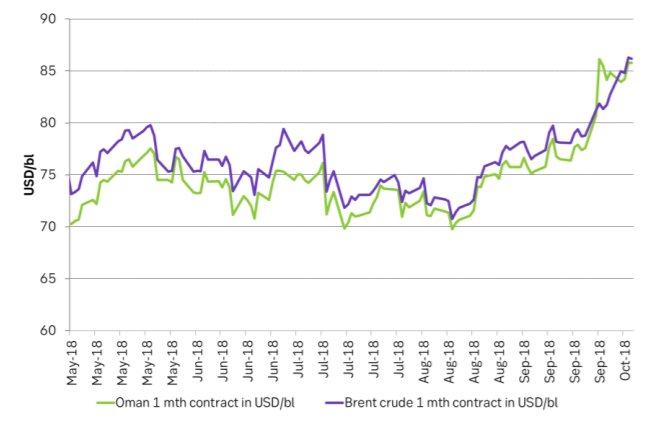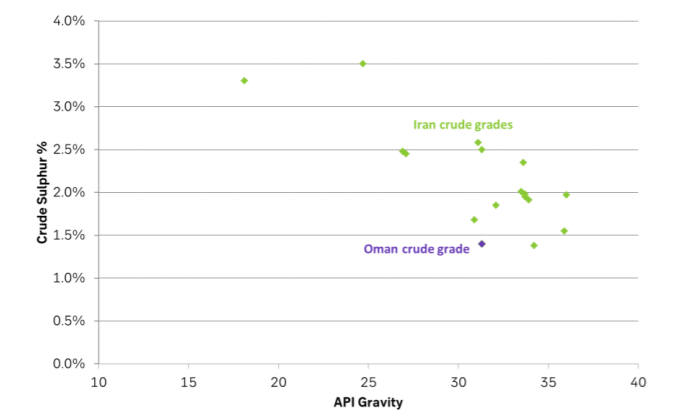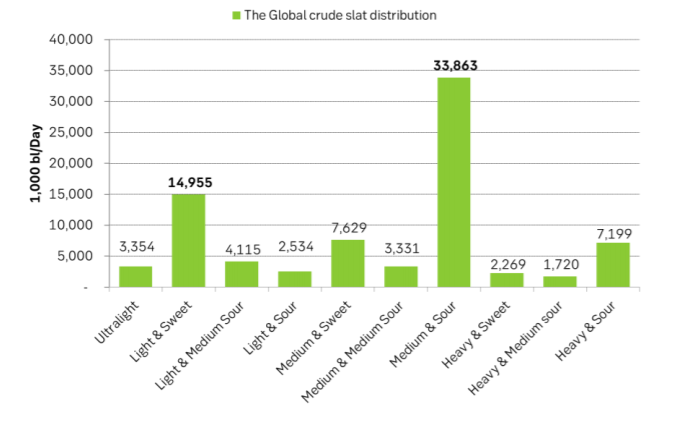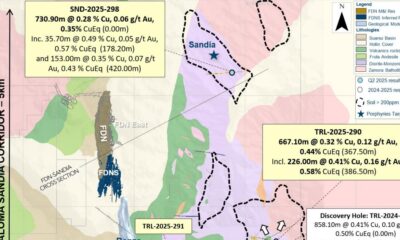Analys
Oman leading the way as sanctions hits physical market

 Rarely have we seen such a brutal break of a major level as when Brent crude broke above $80/bl on September 24. It did not spend a second looking back (re-testing the $80/bl level etc) but instead just charged directly higher. In hindsight we can see that it was really the Oman crude benchmark which was leading the way. This is very unusual as it is normally the light sweet grades like WTI and Brent which takes the lead. The Oman benchmark with gravity and sulphur of (API; S%) = (31.3˚; 1.4%) is the typical medium-heavy and sour grade benchmark of the Middle East. Most modern refineries are built exactly for this kind of crude grade because that is the kind of crude which is most abundant in the world.
Rarely have we seen such a brutal break of a major level as when Brent crude broke above $80/bl on September 24. It did not spend a second looking back (re-testing the $80/bl level etc) but instead just charged directly higher. In hindsight we can see that it was really the Oman crude benchmark which was leading the way. This is very unusual as it is normally the light sweet grades like WTI and Brent which takes the lead. The Oman benchmark with gravity and sulphur of (API; S%) = (31.3˚; 1.4%) is the typical medium-heavy and sour grade benchmark of the Middle East. Most modern refineries are built exactly for this kind of crude grade because that is the kind of crude which is most abundant in the world.
Iran’ crudes have an average gravity of API = 31 but has a higher sulphur content of 2.2%. It is nonetheless a medium-heavy, sour crude now being ripped out of the market. One could say that the actual implementation of the US sanctions towards Iran do not fully kick in before November 4. The fact is however that the real consumers of crude oil, the refineries, are doing their physical purchasing on a typical 1 to 3 months forward basis. November is now thus in the middle of this physical purchasing window.
Privately owned refineries around the world cannot afford to cross swords with Donald Trump’ Iran sanctions. They cannot afford to lose access to the global financial system (where US banks are tightly interwoven), to the international ship insurance market or to the US market in general. Thus they all do the natural thing: They do not contract physical oil from Iran for November onwards.
Thus all their physical crude purchases for the month of November and onwards are now hitting other crude oil producers instead thus doubling up the orders hitting these other producers. The sanctions are thus now fully hitting the physical market but on a two to three months forward horizon. Thus as of yet we do not see it reflected in the weekly inventory numbers. It is however still fully hitting the physical market.
Since the refineries currently using Iran crude are made to process medium-heavy, sour crude their purchases are now naturally re-directed towards other producers of this type of crude. That means Middle East producers. That means the Oman crude benchmark and not the Brent crude benchmark. This means that the Oman benchmark could continue to lead the way on this issue. So in order to look for direction of Brent crude one should keep a close eye on the Oman benchmark these days.
If we look at the Brent – Oman spread we see that Brent crude is only trading $0.4/bl above Oman. That is a very small margin versus the ytd average of $2.2/bl. This tighter spread may be the new norm now in this tighter medium sour crude market (due to Iran sanctions). However, if the Oman benchmark holds its stand at current level it does look like Brent is likely going to be pushed upwards. Overall it looks likely that Oman is going to be pushed yet higher and that Brent will be riding on the top of that wave higher.
When we look at the graphical development of the Oman crude price the impact from the Iran sanctions now hitting the forward physical purchasing window of the world’s refineries looks brutal. Oman has taken a pause in order to let Brent crude catch up with its upwards move but Brent needs to move another dollar or two upwards before normal spreads are re-established.
Unless the other Middle East producers offers sufficient medium sour crude on the market in this forward window in order to offset the loss of Iranian supply then Oman, your direction is up and Brent will follow or float higher on top.
Ch1: Oman 1mth and Brent 1mth. Oman led the way to break above $80/bl
Ch2: Oman crude grade versus Iran crude grades
Ch3: Global crude volumes by grades according to ENI
Analys
OPEC+ in a process of retaking market share

Oil prices are likely to fall for a fourth straight year as OPEC+ unwinds cuts and retakes market share. We expect Brent crude to average USD 55/b in Q4/25 before OPEC+ steps in to stabilise the market into 2026. Surplus, stock building, oil prices are under pressure with OPEC+ calling the shots as to how rough it wants to play it. We see natural gas prices following parity with oil (except for seasonality) until LNG surplus arrives in late 2026/early 2027.

Oil market: Q4/25 and 2026 will be all about how OPEC+ chooses to play it
OPEC+ is in a process of unwinding voluntary cuts by a sub-group of the members and taking back market share. But the process looks set to be different from 2014-16, as the group doesn’t look likely to blindly lift production to take back market share. The group has stated very explicitly that it can just as well cut production as increase it ahead. While the oil price is unlikely to drop as violently and lasting as in 2014-16, it will likely fall further before the group steps in with fresh cuts to stabilise the price. We expect Brent to fall to USD 55/b in Q4/25 before the group steps in with fresh cuts at the end of the year.

Natural gas market: Winter risk ahead, yet LNG balance to loosen from 2026
The global gas market entered 2025 in a fragile state of balance. European reliance on LNG remains high, with Russian pipeline flows limited to Turkey and Russian LNG constrained by sanctions. Planned NCS maintenance in late summer could trim exports by up to 1.3 TWh/day, pressuring EU storage ahead of winter. Meanwhile, NE Asia accounts for more than 50% of global LNG demand, with China alone nearing a 20% share (~80 mt in 2024). US shale gas production has likely peaked after reaching 104.8 bcf/d, even as LNG export capacity expands rapidly, tightening the US balance. Global supply additions are limited until late 2026, when major US, Qatari and Canadian projects are due to start up. Until then, we expect TTF to average EUR 38/MWh through 2025, before easing as the new supply wave likely arrives in late 2026 and then in 2027.
Analys
Manufacturing PMIs ticking higher lends support to both copper and oil

Price action contained withing USD 2/b last week. Likely muted today as well with US closed. The Brent November contract is the new front-month contract as of today. It traded in a range of USD 66.37-68.49/b and closed the week up a mere 0.4% at USD 67.48/b. US oil inventory data didn’t make much of an impact on the Brent price last week as it is totally normal for US crude stocks to decline 2.4 mb/d this time of year as data showed. This morning Brent is up a meager 0.5% to USD 67.8/b. It is US Labor day today with US markets closed. Today’s price action is likely going to be muted due to that.

Improving manufacturing readings. China’s manufacturing PMI for August came in at 49.4 versus 49.3 for July. A marginal improvement. The total PMI index ticked up to 50.5 from 50.2 with non-manufacturing also helping it higher. The HCOB Eurozone manufacturing PMI was a disastrous 45.1 last December, but has since then been on a one-way street upwards to its current 50.5 for August. The S&P US manufacturing index jumped to 53.3 in August which was the highest since 2022 (US ISM manufacturing tomorrow). India manufacturing PMI rose further and to 59.3 for August which is the highest since at least 2022.
Are we in for global manufacturing expansion? Would help to explain copper at 10k and resilient oil. JPMorgan global manufacturing index for August is due tomorrow. It was 49.7 in July and has been below the 50-line since February. Looking at the above it looks like a good chance for moving into positive territory for global manufacturing. A copper price of USD 9935/ton, sniffing at the 10k line could be a reflection of that. An oil price holding up fairly well at close to USD 68/b despite the fact that oil balances for Q4-25 and 2026 looks bloated could be another reflection that global manufacturing may be accelerating.
US manufacturing PMI by S&P rose to 53.3 in August. It was published on 21 August, so not at all newly released. But the US ISM manufacturing PMI is due tomorrow and has the potential to follow suite with a strong manufacturing reading.
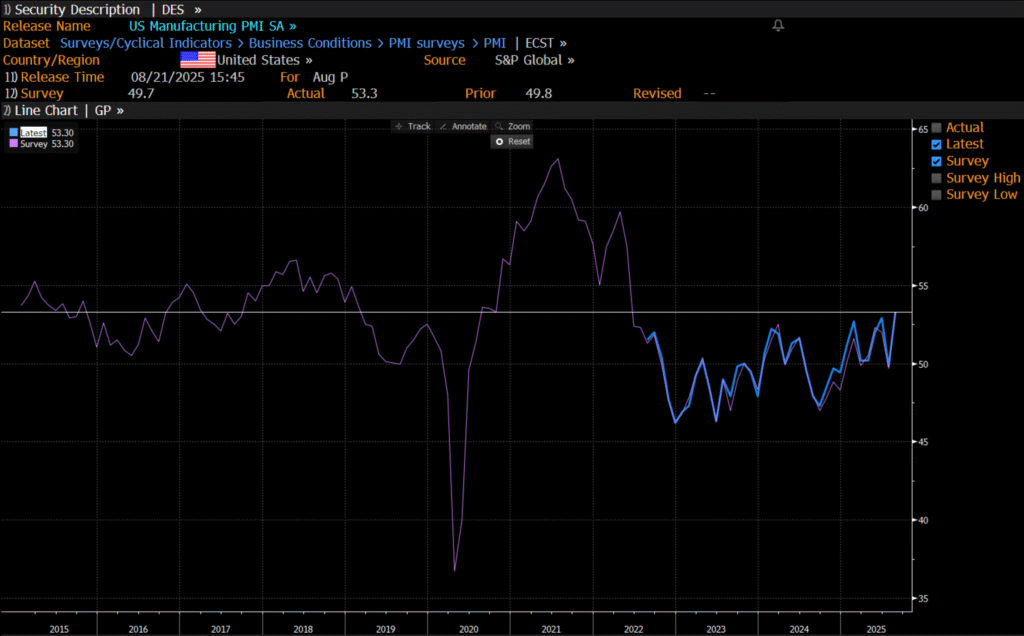
Analys
Crude stocks fall again – diesel tightness persists

U.S. commercial crude inventories posted another draw last week, falling by 2.4 million barrels to 418.3 million barrels, according to the latest DOE report. Inventories are now 6% below the five-year seasonal average, underlining a persistently tight supply picture as we move into the post-peak demand season.

While the draw was smaller than last week’s 6 million barrel decline, the trend remains consistent with seasonal patterns. Current inventories are still well below the 2015–2022 average of around 449 million barrels.
Gasoline inventories dropped by 1.2 million barrels and are now close to the five-year average. The breakdown showed a modest increase in finished gasoline offset by a decline in blending components – hinting at steady end-user demand.
Diesel inventories saw yet another sharp move, falling by 1.8 million barrels. Stocks are now 15% below the five-year average, pointing to sustained tightness in middle distillates. In fact, diesel remains the most undersupplied segment, with current inventory levels at the very low end of the historical range (see page 3 attached).
Total commercial petroleum inventories – including crude and products but excluding the SPR – fell by 4.4 million barrels on the week, bringing total inventories to approximately 1,259 million barrels. Despite rising refinery utilization at 94.6%, the broader inventory complex remains structurally tight.
On the demand side, the DOE’s ‘products supplied’ metric – a proxy for implied consumption – stayed strong. Total product demand averaged 21.2 million barrels per day over the last four weeks, up 2.5% YoY. Diesel and jet fuel were the standouts, up 7.7% and 1.7%, respectively, while gasoline demand softened slightly, down 1.1% YoY. The figures reflect a still-solid late-summer demand environment, particularly in industrial and freight-related sectors.
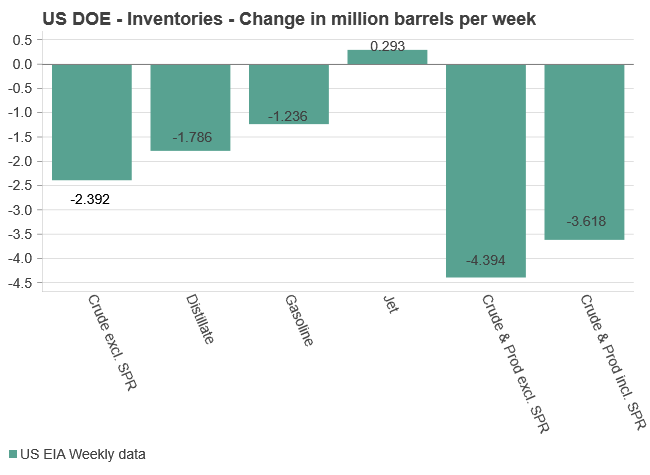
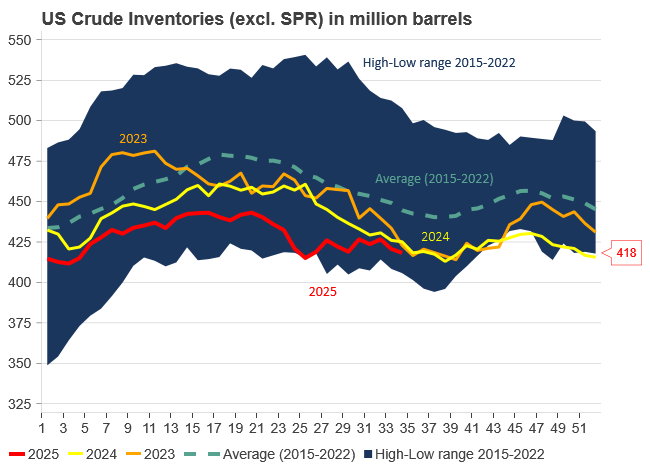
-

 Nyheter4 veckor sedan
Nyheter4 veckor sedanOmgående mångmiljardfiasko för Equinors satsning på Ørsted och vindkraft
-

 Nyheter2 veckor sedan
Nyheter2 veckor sedanMeta bygger ett AI-datacenter på 5 GW och 2,25 GW gaskraftverk
-

 Nyheter4 veckor sedan
Nyheter4 veckor sedanGuld stiger till över 3500 USD på osäkerhet i världen
-

 Analys4 veckor sedan
Analys4 veckor sedanWhat OPEC+ is doing, what it is saying and what we are hearing
-

 Nyheter2 veckor sedan
Nyheter2 veckor sedanAker BP gör ett av Norges största oljefynd på ett decennium, stärker resurserna i Yggdrasilområdet
-

 Nyheter4 veckor sedan
Nyheter4 veckor sedanLyten, tillverkare av litium-svavelbatterier, tar över Northvolts tillgångar i Sverige och Tyskland
-

 Analys2 veckor sedan
Analys2 veckor sedanBrent sideways on sanctions and peace talks
-

 Nyheter2 veckor sedan
Nyheter2 veckor sedanEtt samtal om koppar, kaffe och spannmål



